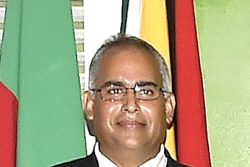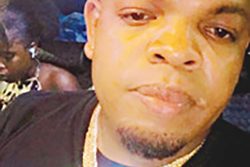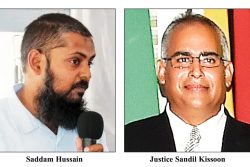An incident in Montgomery, Alabama in the US last weekend has been trending on social media and has given rise to memes and commentary, some of which only serve to fuel the narrative of hate that appears to be inexorably seeping into society, despite much effort to the contrary, like the parasite it is. Videos of what is being referred to as the Montgomery brawl were captured by several onlookers with cell phones.
According to the Montgomery police, the incident stemmed from an attack on the black co-captain of a riverboat by members of a white family who had refused to move their vessel which was docked in the spot reserved for the riverboat. When, after being taunted and ignored, the co-captain attempted to unmoor the vessel, so that the riverboat which had been waiting for some 45 minutes could offload its 227 passengers, the police said, he was physically attacked. A number of black bystanders went to his aid and other white people joined the melee. One man swam to the dock from the riverboat and waded into the fracas with a metal folding chair before the police were able to control the situation. Thirteen people were subsequently arrested but later released and on Tuesday the police charged three white men, but said there might be others as the investigation continued.
According to National Public Radio (NPR), one of the many news agencies that carried reports on the incident, it occurred just hours after former president Donald Trump had attended an annual Republican Party dinner in Montgomery. NPR also noted that Montgomery is “credited as the birthplace of the Civil Rights Movement”.
Drawing a nexus between Donald Trump’s visit to the state and a brawl between whites and blacks is not only expected, but fair. While the former president was not the initiator of the racism that divides the United States, he is certainly the conduit who has brought much of what had been simmering beneath the surface to the fore.
Using pejorative language to offer America a masterclass in discrimination against people based on their religion, ethnicity, nationality, race, colour, descent, and gender, from the time he decided to run for office, Donald Trump can be credited with drastically diminishing the strides the country had made toward tolerance. The blurred lenses through which he views America, and urges others to as well, have proven detrimental to its values, as well as its moral standing in the world.
That being said, while he might be among the most visible, particularly given his rise to power in the era of progress in communication through technology, the former US president is hardly the only politician in the world to advance populism using hate and fear. It is a well-used ploy that is as old as the hills, and one which has never lost its appeal. Unfortunately, narratives of fear and hate do not remain confined to the political sphere, but creep into all aspects of life. They are the harbingers of extremist ideology, hostility, discrimination, and violence, including atrocity crimes, wars, and genocide. History is replete with examples of this.
Growing concern over its global rise and the anonymity afforded to the vilest of its spewers by social media drove the United Nations to launch a Strategy and Plan of Action on Hate Speech in 2019. Two years later, in 2021, the UN General Assembly adopted a resolution proclaiming June 18 ‘International Day for Countering Hate Speech’. Early last month, the UN disseminated a policy paper titled ‘Countering and Addressing Online Hate Speech: A Guide for Policy Makers and Practitioners’, developed by UN Office with the Economic and Social Research Council (ESRC) Human Rights, Big Data and Technology Project, at the UK’s University of Essex. Later in July, UNESCO and the UN Office on Genocide Prevention and the Responsibility to Protect developed a policy guide, targeting educators, which addresses hate speech, both online and offline, proposing ways to counter and hopefully eradicate it through education.
This last initiative is without a doubt the most hopeful at succeeding, but only if it is bought into by governments and interwoven in teaching and learning practices. To borrow from a quote by Nelson Mandela, “no one is born hating…” Hate is not genetic; as much as it often appears to be part of some people’s DNA, it is learned behaviour. It can be unlearned and there is no better place for this to commence than in schools.
Human rights will continue to be under threat until an unprejudiced generation emerges that is both clear seeing and right thinking. A world order based on love for humankind while idyllic might be a bit of a stretch. At the very least, however, if there is to be posterity, there must be tolerance. Countering hate also means fostering respect for each other’s differences, a practice we can all start now.






